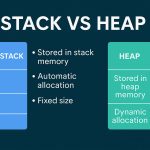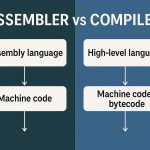Introduction
In the landscape of machine learning and optimization, especially when dealing with large datasets, finding the right balance between efficiency and convergence stability is key. That’s where Mini Batch Descent shines — as a practical compromise between Batch Gradient Descent and Stochastic Gradient Descent (SGD).
Mini Batch Descent is a training technique that breaks the training data into small batches, typically ranging from 8 to 512 samples, and performs a single parameter update per mini batch. This method blends the advantages of full batch learning (stability) and stochastic learning (speed), making it the default optimizer backbone for modern neural networks and deep learning frameworks.
Core Concept
At its core, Mini Batch Descent involves the following process:
- Shuffle the training dataset.
- Divide the data into mini batches of size mmm.
- For each mini batch:
- Compute the average gradient using the batch samples.
- Update model parameters using the computed gradient.
- Repeat for all batches (an epoch), then continue to next epoch.
This approach maintains sufficient gradient signal for convergence while improving computational efficiency.
Mathematical Formulation
Given a dataset with NNN training samples and a loss function L(θ;xi,yi)L(\theta; x_i, y_i)L(θ;xi,yi), the Mini Batch Gradient Descent updates the parameter θ\thetaθ at iteration ttt as:
θ_{t+1} = θ_t - α * ∇L_{mini}(θ_t)Where:
- ααα is the learning rate.
- ∇Lmini(θt)∇L_{mini}(θ_t)∇Lmini(θt) is the gradient of the loss computed over the mini batch B⊂DB \subset DB⊂D, of size mmm.
∇L_{mini}(θ_t) = (1/m) * Σ_{i ∈ B} ∇L(θ_t; x_i, y_i)Here, the gradient is averaged over the mini batch. This reduces the variance compared to SGD and lowers the computational burden compared to full batch descent.
Comparison with Other Gradient Descent Methods
| Method | Batch Size | Update Frequency | Characteristics |
|---|---|---|---|
| Batch Descent | All data | Once per epoch | Stable but slow and memory-intensive |
| SGD | 1 | Every sample | Fast but noisy and unstable |
| Mini Batch Descent | 8–512 (typical) | Per mini batch | Balance of speed and stability |
Mini Batch Descent is the most commonly used variant in deep learning due to its parallelism support and hardware compatibility.
Practical Benefits
1. Computational Efficiency
Mini batches allow for vectorized operations, which are highly optimized on GPUs and TPUs. This leads to better runtime performance.
2. Convergence Stability
While SGD suffers from high variance and can jump chaotically, mini batches reduce this noise, leading to smoother loss curves.
3. Scalability
In distributed settings, mini batches can be processed in parallel across multiple cores or nodes, making this method extremely scalable.
4. Hardware Optimization
Mini batches can be tuned to match the memory architecture of your hardware, minimizing cache misses and maximizing throughput.
Choosing the Right Batch Size
There is no universally optimal mini batch size, but typical ranges are:
- Small batches (8–32): Better generalization, more noise (good for escaping local minima).
- Medium batches (64–128): Good tradeoff for most applications.
- Large batches (256+): Faster training, but risk of sharp minima and generalization issues.
A practical strategy is to start with 32 or 64 and increase gradually if the training remains stable.
Mini Batch Descent in Deep Learning
In deep learning, training a model with millions of parameters on a massive dataset is infeasible with full batch methods. Mini Batch Descent has become the de facto standard in frameworks like:
- TensorFlow
- PyTorch
- Keras
- JAX
It enables:
- Faster convergence
- Better use of hardware accelerators
- More frequent updates for faster learning
Role in Optimizers
Many advanced optimizers build on Mini Batch Descent:
- Adam: Combines mini batch gradient descent with adaptive learning rates and momentum.
- RMSProp: Uses exponentially decaying averages of past squared gradients, still operating on mini batches.
- Adagrad, AdaDelta, Nadam: All assume a mini batch training regime.
These optimizers are not usable in their default form with full batch or stochastic methods — they expect mini batch updates.
Common Use Cases
- Image Classification (e.g., CIFAR-10, ImageNet)
- Natural Language Processing (e.g., BERT, GPT training)
- Reinforcement Learning (policy gradient methods)
- GAN Training
- Time Series Forecasting
In all these domains, mini batching provides the balance between speed, accuracy, and generalization that is critical for success.
Implementation Example (Python + NumPy)
Here’s a simplified implementation of Mini Batch Gradient Descent:
def mini_batch_gradient_descent(X, y, theta, learning_rate=0.01, batch_size=32, epochs=100):
m = len(y)
for epoch in range(epochs):
indices = np.random.permutation(m)
X_shuffled = X[indices]
y_shuffled = y[indices]
for i in range(0, m, batch_size):
end = i + batch_size
X_batch = X_shuffled[i:end]
y_batch = y_shuffled[i:end]
gradients = 2 / len(X_batch) * X_batch.T @ (X_batch @ theta - y_batch)
theta -= learning_rate * gradients
return thetaThis implementation:
- Randomly shuffles data
- Splits into mini batches
- Applies gradient descent updates per batch
Empirical Behavior
When training a neural network using mini batch descent, typical observations include:
- Faster convergence than SGD due to reduced noise
- Smoother loss curves
- Improved generalization over very large batches
- Consistent GPU utilization (good for resource tracking)
Monitoring training vs validation loss curves per mini batch can help in diagnosing overfitting or underfitting.
Challenges and Considerations
- Batch Size Sensitivity: Too large or too small batches may hurt performance or generalization.
- Batch Normalization Dependence: Techniques like batch normalization require meaningful batch statistics.
- Variance and Learning Rate Tuning: Mini batch descent still has gradient variance that can affect stability, requiring careful tuning of learning rates.
Batch Size and Generalization Gap
Recent research suggests that very large batch sizes can lead to sharp minima, which may not generalize well on unseen data. This creates a phenomenon called the generalization gap, especially in vision tasks.
Smaller or moderate batch sizes, while slightly noisier, may help reach flatter minima, which tend to generalize better.
Integration with Learning Rate Schedulers
Using Mini Batch Descent with schedulers improves training robustness:
- Step decay
- Cosine annealing
- Exponential decay
- Cyclical learning rates
These schedulers dynamically adjust the learning rate across epochs, balancing fast learning with stable convergence.
Real-World Analogy
Think of:
- Batch Descent as moving the entire population at once (slow but consistent).
- SGD as letting one person scout the terrain and shout directions (fast but noisy).
- Mini Batch Descent as sending small teams to explore and report back (balanced and efficient).
Summary
Mini Batch Descent is a widely used and powerful optimization technique that blends the benefits of batch and stochastic methods. Its efficient use of computational resources, smooth convergence behavior, and compatibility with modern hardware make it indispensable in machine learning workflows.
Whether you’re training a deep neural network or a logistic regression model, understanding and leveraging Mini Batch Descent can unlock significant performance gains.
Related Keywords
- Adam Optimizer
- Batch Gradient Descent
- Batch Normalization
- Convergence Rate
- Deep Learning
- Gradient Descent
- Learning Rate
- Loss Function
- Optimization Algorithm
- SGD
- Training Epoch
- Weight Update









